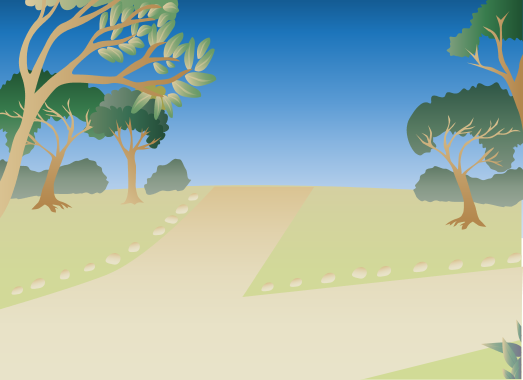 For angel baby Weston
For angel baby Weston This book was created and published on StoryJumper™
©2015 StoryJumper, Inc. All rights reserved.
Publish your own children's book:
www.storyjumper.com






Hi everyone, my name is Weston! I have thought a
lot about what I want to be when I grow up.
Initially, I wanted to be a secret agent or an
astronomer, or maybe a geologist. It was finally
apparent to me that I really want to be a
meteorologist. I love learning about the weather
here on earth. I have accumulated lots of charts,
data, and information about weather on the planet.
Many areas and regions have different weather
patterns.
So, come on an adventure with me to learn about
all things weather!

Lets start learning...about the weather in polar
climates. In some cold places, there are
icebergs or glaciers. Ablation can occur as well
as icebergs can have large crevasses. It is
common for icebergs to drift in the cold
environment. Many lifeforms cannot withstand
such low-level temperatures at such high
altitude. Periodically, meltwater will occur or
even an avalanche. However, even cold places
never reach absolute zero. Polar climates are
the only ones that receive snow at sea level.




There are locations all over the world
that have duration's of cold
temperatures. Most of these places are
in the northern hemisphere. When there
is snowfall, the visibility is
typically decreased. A blizzard also
impacts visibility for people driving
cars. A squall can bring a extended cold
front. If the temperature drops below
273.15 Kelvin,standard pressure, black
ice can form on the surface of the
ground.



The opposite of cold weather is hot and
sometimes humid weather in the desert. The
mean average temperature is 20-25 degrees
Celsius. It can even reach up to 120 degrees
Fahrenheit. The desert gets a lot of exposure to
the sun. A significant feature of the desert is
the the little rainfall or precipitation it receives.
When it does rain, ground water holds the H2O
in the water table. Most of the time, the soil is
very dry.










Coastal Weather
The coastal biome is home to many
types of animals and plants that are
effected by and benefit from the
weather. Birds need to be careful not
to fly into a convergence of airflow
is. The cyclone winds at the coast help
in the erosion of rocks and a cleavage
may develop in the them. The ocean is
a gigantic body of water on the globe
and evaporation occurs everyday. The
moon controls the constant ocean
currents. You may even see a cascade on
the cliffs by the ocean.



Some places around the world have ranging
climates and the weather varies greatly. On a
few continents, the weather is semiarid. Other
places have a tropical climate where the
temperature never reaches zero! Within the
biosphere, many cyclical weather patterns
occur. England and Africa do not have identical
weather climates. The relative humidity level
will be in variation depending on the place you
are on earth. There are a broad range of
organisms that are effected by the climates
around the world.

Weather can be so erratic and strange!
The direction of the wind can change at
any time. Humans interact with the
weather on a daily basis. Normally,
the weather can be projected. It is rare
that a storm sneaks up on
meteorologists. Within the atmosphere,
the capacity to hold liquid is at a high-
level. Weather occurs in every part of
the world. This data helps scientists to
approximately predict weather events.
Sometimes there is an accumulation of
acid in the air, creating acid rain.
Occasionally . air masses collide to
create monstrous storms.



You've previewed 9 of 15 pages.
To read more:
Click Sign Up (Free)- Full access to our public library
- Save favorite books
- Interact with authors



 For angel baby Weston
For angel baby Weston This book was created and published on StoryJumper™
©2015 StoryJumper, Inc. All rights reserved.
Publish your own children's book:
www.storyjumper.com






Hi everyone, my name is Weston! I have thought a
lot about what I want to be when I grow up.
Initially, I wanted to be a secret agent or an
astronomer, or maybe a geologist. It was finally
apparent to me that I really want to be a
meteorologist. I love learning about the weather
here on earth. I have accumulated lots of charts,
data, and information about weather on the planet.
Many areas and regions have different weather
patterns.
So, come on an adventure with me to learn about
all things weather!

Lets start learning...about the weather in polar
climates. In some cold places, there are
icebergs or glaciers. Ablation can occur as well
as icebergs can have large crevasses. It is
common for icebergs to drift in the cold
environment. Many lifeforms cannot withstand
such low-level temperatures at such high
altitude. Periodically, meltwater will occur or
even an avalanche. However, even cold places
never reach absolute zero. Polar climates are
the only ones that receive snow at sea level.



- < BEGINNING
- END >
-
DOWNLOAD
-
LIKE
-
COMMENT()
-
SHARE
-
SAVE
-
BUY THIS BOOK
(from $2.99+) -
BUY THIS BOOK
(from $2.99+) - DOWNLOAD
- LIKE
- COMMENT ()
- SHARE
- SAVE
- Report
-
BUY
-
LIKE
-
COMMENT()
-
SHARE
- Excessive Violence
- Harassment
- Offensive Pictures
- Spelling & Grammar Errors
- Unfinished
- Other Problem






COMMENTS
Click 'X' to report any negative comments. Thanks!